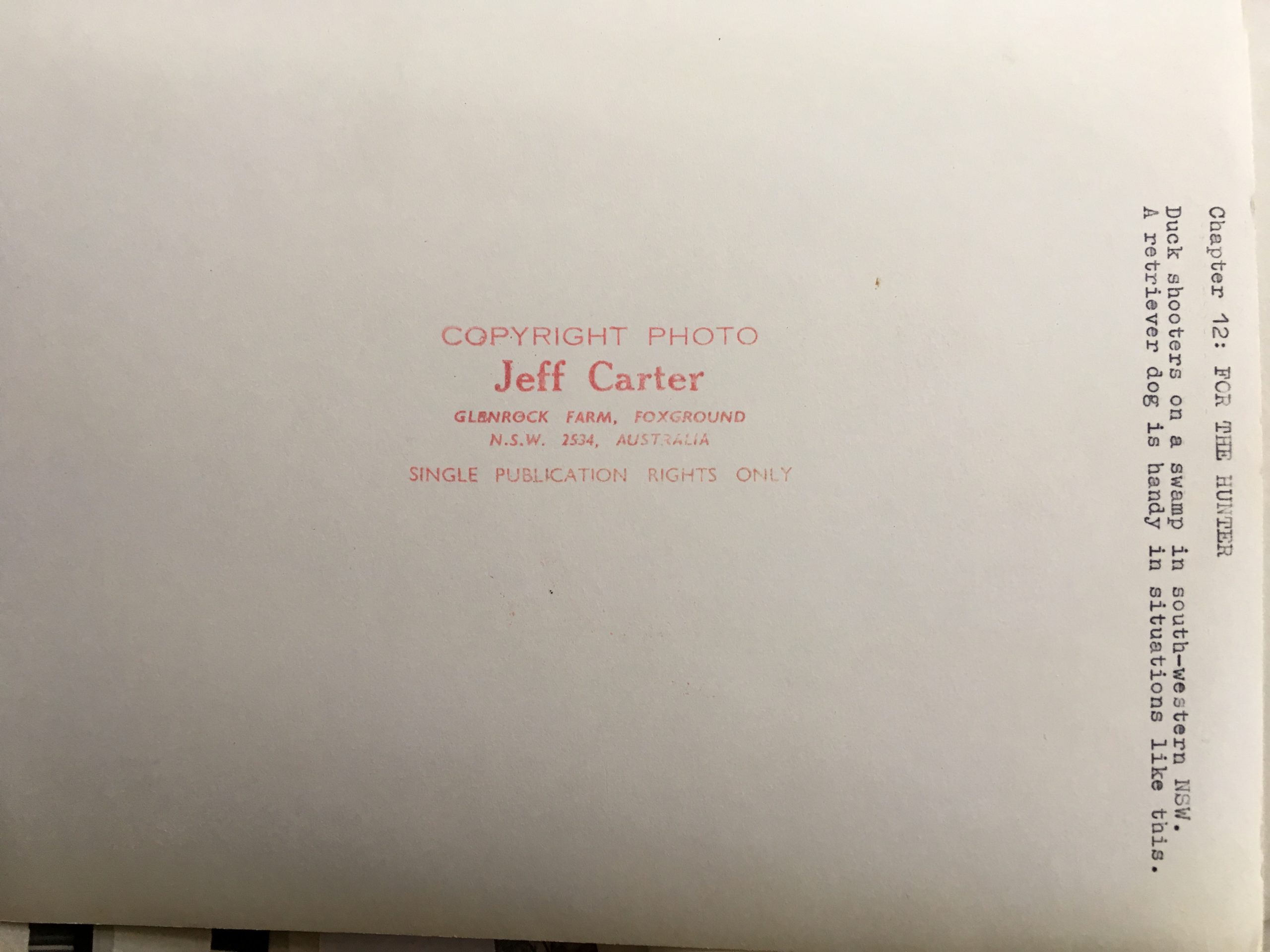Nine Entertainment pressures the government to get the tech giants to pay for local news content. Meanwhile, for three years Nine has been playing Goliath in a fight with Australian freelance photojournalists, whose photos Nine sold even though it didn’t own the copyright. Callum Foote reports.
Jeff Carter (1928-2010) was a prolific and acclaimed Australian freelance photojournalist, a best-selling author of more than 20 illustrated titles and an award-winning filmmaker.
Carter’s obituary in the Sydney Morning Herald described him as Australia’s “most prominent photographer for the poor and unknown”.
From 1954, Carter regularly supplied Fairfax Media (now owned by Nine Entertainment) with original photographs as well as essays and articles from his travels around Australia.
Each photo and manuscript that Carter provided to Fairfax was on a non-exclusive single-use basis, with the original print to be returned to Carter. On the back of each print was a stamp asserting Carter’s copyright.

Courtesy of the Jeff Carter Archive
Fairfax, however, often did not return the prints, and regularly republished Carter’s photos without paying for the re-usage.
By the 1990s Carter had sent numerous letters to Fairfax, raising complaints about the repeated breaches of his copyright. On occasions, he would storm into the Fairfax offices to demand the return of his prints and a double payment as reimbursement for his trouble.
In a 2008 letter, Carter wrote to John Saxby, the former Arts and Spectrum editor at the Sydney Morning Herald saying:
“Once again, I don’t know how many times it is now over the years, Spectrum has made unauthorised feature use of one of my images.”
While Carter would often get prints back after raising his concerns, he never knew how many of his prints Fairfax kept in its archives, according to Sandra Byron, the curator of the Carter Estate.
“Jeff was a staunch defender of his copyright and frequently told Fairfax that they didn’t own them, they couldn’t use them, they shouldn’t have them as they should have been returned long ago and they must send them back.”
Carter and subsequently his estate have been fighting Fairfax for years for the lawful return of Carter’s original prints and manuscripts.
But in 2013 the matter was made far more complicated and urgent.
Dealing with a conman
In 2013, Fairfax made a deal with American businessman John Rogers and his company Rogers Photo Archive (RPA), based in Little Rock, Arkansas, to digitise Fairfax’s archive. The Fairfax archive consisted of millions of photographs and manuscripts – from the Sydney Morning Herald, the Sun-Herald, the Australian Financial Review, The Age and 72 New Zealand newspapers – dating back as far as the 19th century.
Among the Fairfax archive were 2.5 million items which Fairfax had collected but, much like the Carter prints it had in its possession, had little to no legal ownership over. In total Fairfax had collected roughly 2,500 Jeff Carter originals.
Under the deal, Rogers agreed to digitise the whole Fairfax archive, and in return, would pay Fairfax just US$300,000 for the 2.5 million items to which Fairfax had little to no legal claim. As noted in US court documents, Fairfax admitted that it knew it “may not own or have any rights in some of the [items] beyond ownership of the physical prints”.

Extract of Fairfax/RPA contract taken from US court documents.
Essentially, Fairfax used the 2.5 million items to which they knew they had dubious legal claim to subsidise the cost of the digitisation of their own archive.
Fairfax also entered into a profit-sharing deal with Rogers, agreeing to split 50/50 any profits made from the digitisation of the 2.5 million items.
In 2017, lawyers representing the Jeff Carter Estate wrote to Fairfax saying: “Fairfax did not own or control the copyright subsisting in the Carter prints, nor did it own the physical Carter prints in its possession” when the deal occurred.
Fairfax continued its infringement after being put on notice by the Carter estate’s lawyers. Sandra Byron caught Fairfax selling unlicensed prints of Carter’s work in 2017. Fairfax attached their own copyright sticker and were quoting advertising licences for similar works to Carter photographs for $20,000 for a five-year period.
Fairfax has so far declined to comment to Michael West Media.
The sound of the police
In 2014, the FBI raided Rogers’ home and office over banking fraud allegations. In 2017, Rogers was sentenced to 12 years’ jail for using fake sporting memorabilia as collateral to fraudulently obtain at least $10 million from investors and banks.
Rogers later filed for bankruptcy leaving the archive in the possession of liquidators. The liquidators were planning on separating the archive into segments and selling them on eBay. Instead, a Californian gallery owner Daniel Miller stepped in and bought the archive.

Image courtesy of The Eye of Photography
When Miller brought the prints back to Australia he was widely acclaimed in the media for “rescuing” the historic archive, which included works by other Australian artists including Max Dupain, Wolfgang Sievers, David Moore, Olive Cotton and Carol Jerrems.
According to Miller, each photograph would likely sell for between $20 and $400, with photography appraiser Penelope Dixon valuing the whole collection at US$82 million, or about $41 per photograph.
However, the Jeff Carter Estate had previously valued and sold many of Carter’s original and signed vintage prints for between $18,000 and $25,000.
Byron, an experienced professional valuer herself, said she “believes that valuation which was completed in the US was very low as it did not differentiate between works by Australia’s leading and collectable art photographers with demonstrably much higher sales values and records and more standard press images.
Dumping stock
In 2017, Miller contacted the Carter estate ostensibly with an inquiry regarding showing Carter’s work for an exhibition. Miller asked for information on Carter’s life, the going rates for signed prints, how many signed prints existed and whether any prints had been made following Carter’s death.
It wasn’t until December of that year that Miller informed Carter’s estate he had in his possession up to 2,500 original Carter prints.
Miller then appeared to threaten the Carter estate that he would flood the market with Carter originals, thus reducing the value of the remaining prints the estate had in its possession.
Miller told the estate that:
“It would be much smarter for us to agree to work together, than for us to sell these for nominal prices over the next several years. That would seriously hurt the value of his work and your estate and I have no desire to do that.”
After the Carter estate refused to buy the prints, Miller sold the archive on the open market for 10 to 15 per cent of its appraised value and a fraction of what the Carter estate had previously sold Jeff Carter prints for.
Miller’s dumping of the prints has, according to the Carter estate’s lawyers, “destroyed the business of the Jeff Carter Estate”.
Miller has declined to comment to Michael West Media.
Despite grievances with Daniel Miller, the Jeff Carter Estate ultimately holds the actions of Fairfax/Nine Entertainment responsible for the undermining of their business.
Fairfax’s Lawyers
Sandra Byron, the curator of the Carter estate, says the estate has been trying to resolve the issues with Nine for three years since Miller first made contact with them.
She says that legal fees are steadily increasing, yet Nine Entertainment’s response to a letter she wrote to their lawyers in August this year has been to delay and deny in spite of what she says is overwhelming evidence.
Nine Entertainment has not admitted any fault regarding the sale of the Carter prints to John Rogers or their alleged commercial-scale copyright infringement and refuses to settle the legal action the estate has brought.
On 17 August 2020 James Talbot, Nine’s executive council, told Byron that “unless there is some new point that has not been raised to date, our position remains as previously stated and we see no benefit to either party in any further discussions at this time”.
So on the one hand, Nine Entertainment is decrying the need for the big tech companies such as Google and Facebook to pay for the use of content created by Australian media companies. Yet, on the other hand, Nine refuses to come to the party in resolving its complicity in destroying the estate of a freelance photographer.
Callum Foote was a reporter for Michael West Media for four years.

